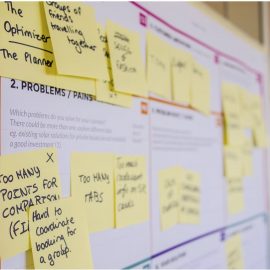
This is a free excerpt from one of Shortform’s Articles. We give you all the important information you need to know about current events and more.
Don't miss out on the whole story. Sign up for a free trial here .
What is regenerative agriculture? Why is it crucial for the future of farming? What challenges exist in shifting to regenerative farming practices?
In September 2023, leading food and beverage companies came together with farmers, academics, and NGOs to establish the first industrywide definition of regenerative agriculture. Regenerative farming can mitigate the environmental and health impacts of traditional farming methods in multiple ways.
Keep reading to learn about regenerative agriculture practices and the ways they help the environment.
The Switch to Regenerative Agriculture
In September 2023, key food corporations including Nestlé and Pepsico reached a consensus on the definition and framework for regenerative agriculture, suggesting an industrywide shift toward more sustainable farming practices. This decision potentially marks a turning point in the global pursuit of a resilient food system.
Background
Regenerative agriculture practices are a transformative farming approach that emphasizes soil health, biodiversity, and resilience. Different from traditional farming methods that deplete soil nutrients and contribute to greenhouse gas emissions, regenerative agriculture focuses on holistic strategies aligned with nature.
Why a Regenerative Approach Is Necessary
Researchers say a shift to regenerative farming methods is critical to mitigate substantial environmental and health impacts of traditional agricultural practices, which:
- Account for 27% of global greenhouse gas emissions—a number expected to rise 15-20% by 2050 if practices remain unchanged.
- Exacerbate water scarcity issues. Traditional farming methods guzzle 70% of the world’s freshwater.
- Deplete soil. Traditional farming methods remove soil nutrients, diminishing crops’ nutritional content.
- Expose producers and consumers to pesticides. Farmers and agricultural workers risk inhaling, ingesting, and absorbing pesticides and herbicides through their skin; consumers who eat traditionally farmed fruits and vegetables may ingest lingering pesticide and herbicide residues.
Regenerative Agriculture Benefits
Prominent researchers argue in favor of widespread adoption of regenerative agriculture due to numerous advantages, including:
- Ecological impact. Regenerative methods can:
- Improve soil health by augmenting biodiversity and organic matter while reducing erosion and degradation. This optimizes water use—boosting water retention, groundwater restoration, and resilience against floods and droughts.
- Enhance biodiversity by strengthening wildlife habitats and contributing to the development of diverse, resilient ecosystems.
- Mitigate climate change by capturing and reducing atmospheric carbon from the atmosphere and storing it underground.
- Economic gains. Regenerative systems can be up to 60% more profitable than traditional farming methods due to decreased input costs and more reliable crop yields.
- Societal welfare. Regenerative farming improves nutrition by yielding nutrient-rich food. It also supports farmers’ well-being and health by building community and reducing their reliance on chemicals.
Adoption Challenges
However, like any systemic change, experts say that shifting to regenerative agricultural practices comes with issues and challenges, including:
- Yield dependency. Farmers rely on their crop output for income, making the switch to new practices that could potentially decrease yield initially, a daunting prospect.
- Prolonged transition period. The transition to regenerative farming can take years, imposing a financial burden on farmers.
- Labor shortages. Regenerative practices, which are labor-intensive, can be difficult to implement in regions with labor shortages.
Market Growth and Innovation
The regenerative agriculture market has seen significant growth in the last five years. Major players, such as Bayer, are channeling funds into developing innovative farming methods and sustainable solutions. Additionally, venture capitalists are investing in technologies to bolster regenerative agriculture.
Looking Ahead
Moving forward, experts offer these targeted strategies for the successful adoption of regenerative agriculture practices:
- Strengthen public-private partnerships to scale sustainable agriculture.
- Develop new financial tools that reflect the economic contribution of biodiversity to attract sustainability-focused investors.
- Spread financial responsibilities across all parties in the food chain to minimize risks involved in the switch to regenerative farming.
- Prioritize a fair transition that includes perspectives often overlooked in agriculture, such as those of Indigenous, minority communities, and migrant workers, to ensure added diversity of knowledge and practice.

Want to fast-track your learning? With Shortform, you’ll gain insights you won't find anywhere else .
Here's what you’ll get when you sign up for Shortform :
- Complicated ideas explained in simple and concise ways
- Smart analysis that connects what you’re reading to other key concepts
- Writing with zero fluff because we know how important your time is






